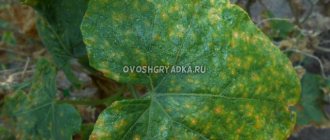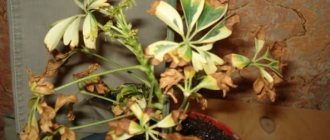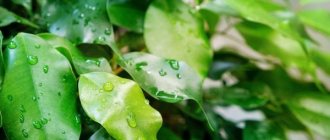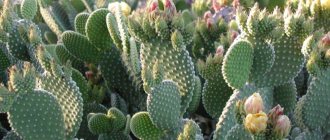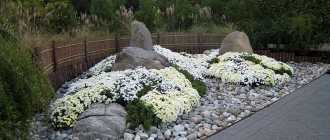Infectious nature
A significant change in the natural color of the leaf cover often occurs when the plant is infected with a virus or bacteria. If the leaves quickly change their shade, becoming paler or yellow, then there is a possibility that they have been affected by the dangerous yellow mosaic virus.
In most cases, the disease attacks plants at the beginning of the growing season, causing the leaf blades to become covered with yellow streaks and stripes. As the disease progresses, they turn into solid spots, and then the leaf begins to slowly dry out and fall off. As is known, the causative agent of the disease is a specific soil fungus called Polymyxa. It is found in the upper layers of the soil and is transferred to the crop being grown by contaminated tools.
The virus is also carried by all kinds of insects, including aphids. This is especially often noticed in plantings of plants from the legume family, where different types of aphids often live.
If the infection begins to affect the plant at the beginning of the growing season, then after a short time it may simply die. The lack of proper treatment leads to damage not only to the leaves, but also to the flowering elements, which play a key role in proper ripening and fruiting.
Often the appearance of chlorosis is explained by the activity of mycoplasma-like organisms , which can be carried onto green parts by the following types of insects:
- Psyllids.
- Cicadas.
- Nematodes.
In addition to indoor plants and vegetable crops, fruit trees and berry bushes also suffer from chlorosis. In this case, the disease is of a slightly different nature - the pathogen enters it through pollen or during vaccination activities. Most often, apple trees and stone fruits are affected by chlorosis. Due to significant necrotic changes that result from the development of the disease, the affected leaf cover begins to die, and yields are noticeably reduced. Also, the natural process of photosynthesis in plants is suspended.
Infected trees, bushes or garden plantings stop bearing fruit normally, and the ripening time of fruits is greatly slowed down. Their number is also decreasing. Gardeners from European countries talk about the massive death of vineyards from chlorosis.
https://youtu.be/Ie9mtQ5HFFs
Prevention
Preventive measures consist of the simplest measures:
- Humidity level maintenance.
- Position the plant in such a way that it receives only diffuse sunlight.
- Regular watering and fertilizing (without exceeding the recommended dosage).
- When parasites or diseases appear, the crop is treated with special means and transplanted into new soil and a flowerpot.
Failure to follow the rules of care can lead to problems with growing “female happiness” and loss of its decorative value. The florist should respond to changes quickly and competently.
Fighting the disease
If the cause of chlorosis has been determined, it remains to find an effective way to combat it. As is known, the causative agent of a dangerous disease can enter a crop in a variety of ways. Accordingly , therapeutic measures must be radical and consist of a number of measures:
- Complex soil disinfection.
- Disinfection of instruments used to process crops.
- Fight against insects that can carry the virus.
- Cleaning seeds.
To effectively disinfect the soil, you can use a number of highly effective fungicides. These include chemicals that are popular among gardeners and are excellent at killing microorganisms that cause diseases.
It is customary to begin treatment activities in early spring, using solutions of copper and iron sulfate, as well as Nitrafen.
Some fungicidal preparations are supplied in dry form. These include Heterophos granules, which are deepened 10 centimeters into the soil around the crop being grown and then thoroughly spilled with water.
Some owners of gardens and vegetable gardens do not pay enough attention to the fact that all garden equipment needs to be disinfected. At the end of the season, the hoe and shovel must be disinfected with a solution of technical alcohol or boiling water. With these actions it will be possible to cleanse them of all kinds of parasites and microbes. During the cold season, instruments are stored in a cold storage room, because dangerous microorganisms are practically powerless there.
If there is a threat of infection, it is necessary to carry out comprehensive treatment of seed and planting material. The faster this is done, the more successful the further cultivation of plants will be. Pesticides are used as preparations, which significantly reduce the number of harmful insects that carry the pathogen.
Preventive measures
Still, it is better to prevent a problem than to fix it later.
An excellent preventative measure would be regular feeding:
- 1 time every 2 weeks – in spring and autumn;
- Once every 30 days - in the autumn-winter period.
Some gardeners recommend periodically carefully replanting the plant , partially or completely replacing the soil mixture.
also recommended to acidify water for irrigation with vinegar or citric acid to soften it.
Non-infectious causes
Often the cause of the development of chlorosis is unfavorable living conditions, including poor soil composition. If there is too much lime in the substrate or there is no optimal mineral balance, the plant begins to wither and lose the natural color of the leaves and stems . Among the most key elements, the lack of which causes chlorosis, we should highlight:
- Iron.
- Zinc.
- Seru.
- Magnesium.
However, not only a lack of individual elements leads to chlorosis, but also their excess. It is known that elevated levels of zinc, copper and manganese are among the most common causes of disease progression. Initially, light spots cover only some parts of the leaves, without affecting the veins.
Over time, the leaves begin to drill and die, and then the tops of the shoots. Young leaf blades that do not have the necessary immunity are at increased risk. To neutralize lime, colloidal sulfur should be added to the substrate or treated with a solution of sulfuric acid in a small concentration.
If the plant does not receive the required amount of iron, the leaves begin to quickly turn yellow, while the veins retain a green tint. To eliminate the problem, it is enough to use the highly effective “Ferrovit” or “Fe+” product. Timely treatment is the key to successfully combating non-infectious chlorosis.
With a lack of magnesium, loss of natural color appears from the edges of the leaves. In this case, they begin to lighten and then turn down. Over time, the yellowness spreads across the entire leaf, while the thickest and strongest veins remain intact. To avoid the progression of chlorosis, it is enough to treat the plant with magnesium sulfate.
Zinc deficiency leads to shredding of leaves, as well as the appearance of yellow specks on their surface. Over time, the leaves become faded yellow. To solve the problem, it is enough to plant alfalfa near the crop.
Lack of sulfur is the reason for the slowdown in development. In this case, the leaves begin to take on a light shade and then turn red.
The symptoms of the problem are almost the same as in the absence of the optimal amount of nitrogen. Sometimes, to determine an element that is in short supply, laboratory analysis is required.
What to do if the leaves become lighter?
To save “women’s happiness,” the florist must perform the following steps::
- Normalize watering. The soil is moistened only after 1/3 of the total volume of soil has dried out. And at the same time do not allow the soil to dry out. For irrigation, take settled water at room temperature.
- Spray the crop daily to maintain optimal air humidity levels.
- The air temperature in summer and spring should be 25-27 degrees, and in autumn and winter – 15-18 degrees.
- During the period of active plant growth, feed it regularly (once a week), using ready-made mineral complexes for this.
- To combat diseases, treat spathiphyllum with a fungicide, and use insecticides to kill pests.
The most vulnerable plants
To compile a list of plants most vulnerable to the development of chlorosis, it is necessary to evaluate their biological description. There is no clear answer to this question, because almost all green spaces respond negatively to a deficiency of important elements or the activity of pathogens. And both cultivated plants and wild ones growing in open ground are at risk. However, representatives of a separate group are so afraid of the disease that they may die from it.
So, the plants most susceptible to chlorosis are:
- Homemade - various varieties of hibiscus, citrus fruits, azaleas, gardenias and ficuses.
- In the natural environment there are fruit-bearing shrubs, including currants and raspberries, pears, apple trees, petunias, and roses. Among vegetable crops, representatives of the nightshade family stand out, and among berries - grapes and strawberries.
Why do leaf blades turn pale green?
Any change in leaf color indicates the plant’s reaction to one or another negative factor .
This reaction manifests itself in disruption of chlorophyll production. For an accurate diagnosis, it is enough to closely examine the leaf blade. If there are no small microorganisms (aphids, spider mites), cobwebs or sticky liquid on it, then the reason for plant suppression lies in care errors.
The most common reason that petunia leaves turn white is a deficiency of macro- and microelements. Petunia is very sensitive to lack of nutrition , especially when grown in containers.
Treatment of chlorosis
How to treat leaf chlorosis is a sore subject for every caring gardener. Depending on the nature of the disease, a number of special measures must be taken. It all depends on proper preparation for planting and further care of the crop. To prevent the development of the problem, it is enough to follow the established recommendations of experienced colleagues and act radically.
As you know, chlorosis can be infectious and non-infectious. In the first case, it is necessary to carry out comprehensive disinfection of all elements that in any way come into contact with the plant. We are talking about soil composition, tools and seeds. A good preventative measure is to add biological fungicides to the substrate. They are also intended for seed treatment, which increases their resistance to infections.
As for gardening tools, they are treated with a rag soaked in alcohol or boiling water. In addition, the gardener needs to protect the plant from insects that carry the pathogen. In this case, various methods are used, including growing repellent plants, as well as strengthening the immunity of the crop.
Managing non-infectious chlorosis is a little different. As you know, the problem is caused by a deficiency of important microelements and vitamins. If it is not possible to determine the specific missing substance, you will have to treat the crop with complex fertilizers that contain a balanced combination of microelements . Such means include:
- "Florist Micro".
- "Uniflor Micro".
- "Hello."
The prepared solutions contain a high amount of the necessary substance that the culture requires. After performing several treatments, you will notice an improvement in the condition of the crop and the restoration of the natural color of the leaves and stem.
In addition to purchased products, folk remedies are extremely effective. It’s easy to prepare them at home, following step-by-step instructions. The main thing is to remember about balanced concentration and optimal dosage. In this case, treatment of chlorosis will be effective and quick.
Thin and elongated seedlings
The main reasons for such changes:
- Excessive moisture. The root system stops growing and all forces are directed to the development of the green part.
- Incorrect air humidity readings. If the room is too dry and hot, the shoots become too thin.
- Lack of lighting. In this case, the sprouts try to get as much light as possible by stretching upward. This situation can be corrected by installing a phytolamp near the flowerpot.
- Planting seeds ahead of schedule. If the grains are planted before the twentieth of March, the shoots will begin to seek light for themselves, thus thinning.
- Violation of the feeding schedule. It is a common cause of thin, weak shoots and light-colored leaves.
Thick sowing of grains can also lead to discoloration. In this case, all the seedlings are intertwined with each other, blocking the entry of light and ultraviolet radiation.
Less commonly, intensive growth of seedlings may occur as a result of improper seed preparation. Therefore, in order to reduce the occurrence of this problem to zero, it is recommended to buy grains only in specialized stores. They are already sold in packages prepared and processed. If the purchase of planting material was carried out at the market, then the seeds must be treated with a disinfectant. One of these is a solution of potassium permanganate.
Folk remedies to eliminate yellowing of leaves
In order to restore plants and improve their condition, it is not necessary to spend money on special preparations. There are traditional methods of fertilization that can be used both for plants on the windowsill and in open ground. One of them is an infusion of onion peels. This is a very effective and gentle fertilizer that perfectly saturates the substrate with all useful substances.
To prepare the infusion you need:
- Place a glass of onion peel in a liter jar and fill with hot water.
- Infuse the product for 24 hours at room temperature in a dark place.
- At the end of the time, the liquid must be filtered.
Seedlings should be watered at the root using a watering can. There is no need to further dilute the infusion, as it will lose its effectiveness.
Important! An effective remedy is iodine solution and hydrogen peroxide.
To prevent tomato seedlings from turning bad and acquiring a green color, you need to know what to do if the leaf blades turn pale. Thin and pale seedlings mean, first of all, improper care. Therefore, it is important to adhere to the basic rules of watering and fertilizing. If everything is done correctly, the plants will delight throughout the entire growing season.
- The best ways to strengthen tomato seedlings in the first days of growth
- Planting onions on greens: planting, growing, harvesting
- Rules for planting cabbage seedlings
- Why do you need nitrogen fertilization of garlic in spring?
- All ways to grow onions on a windowsill
Advice from experienced gardeners
How to protect the crop from destruction and prevent the leaves from turning pale? For those who plant seedlings in a greenhouse, the key to success is preliminary cleaning in the greenhouse before the planting season. It is necessary to remove all old foliage, wash and disinfect the walls with a solution of potassium permanganate.
Despite the high effectiveness of folk recipes for feeding cucumbers, it is recommended to use professional products. These are balanced compositions that may cost more, but have a beneficial effect on the development of vegetables.
For example, “Magbor”, “Kaltsinit”, “Uniflor”, “Omex”, “Molibion” are produced containing individual microelements.
Reference. For emergency replenishment, you can use two-component formulations - “Azofos” and “Diammophos” (phosphorus with nitrogen) or a three-component composition – “Nitrophoska” (nitrogen, phosphorus and potassium).
Summer residents recommend using a simple method to determine alkaline soil in which phosphorus is poorly absorbed: to do this, check the reaction with litmus paper. If you get positive results, add peat or sawdust to the soil.
An important rule for caring for cucumbers is regular processing and disinfection of garden tools. For example, mosaic can even damage seeds, and its activity lasts for about three years.
Priority measures
When the reasons for the blanching of cucumber foliage and fruits become clear, first of all it is worth eliminating the factors that have a negative impact on the development of the vegetable crop:
- increase the dose of the element that the plant lacks;
- cancel feeding with a component whose standard is exceeded;
- build a tunnel greenhouse with arched posts over the plantings, if the reason was early transplantation into unheated soil - this will create an additional thermal effect.
- trim off excess lashes and reduce the number of fruit ovaries, distributing them at an equal distance from each other, decreasing towards the top. The average number of ovaries on a plant is no more than 20-24 at a time.
- In case of illness, treatment is started immediately, and the soil is also disinfected.
If cucumbers have pale leaves, what to feed them with?
To balance the nutrients in the soil, you can use both organic and mineral fertilizers for cucumbers. There are a huge number of species of both. You don't need to use everything at once.
Video: Feeding cucumbers in the 4-5 leaf phase
Knowing the type of soil on the site and the needs of cucumbers, you can choose 2 - 3 types of mixtures and a solution of microelements to maintain the required amount of nutritional components.
Infection
Cucumber leaves may become light due to plant infection by viral diseases. The infection is carried by pests. This group of viruses, unfortunately, cannot be treated, and heavily infected plants will have to be removed from the ground and burned. Another thing is pest control, and even better, preventing their occurrence. To prevent your plants from getting sick, the frequency of treatments must be strictly observed.
- Calendar for treating cucumbers against diseases and pests
At every stage of cultivation, cucumbers need our help. Proper care of them will help you get a good harvest.
The appearance of pale leaves on cucumbers is not the worst problem. It is much more offensive if, despite observing all care measures, cucumbers lose their ovaries.
- Why do cucumber ovaries turn yellow and fall off?
Have the cucumber ovaries turned yellow and started to fall off? Most likely, the plant needs your urgent help!
